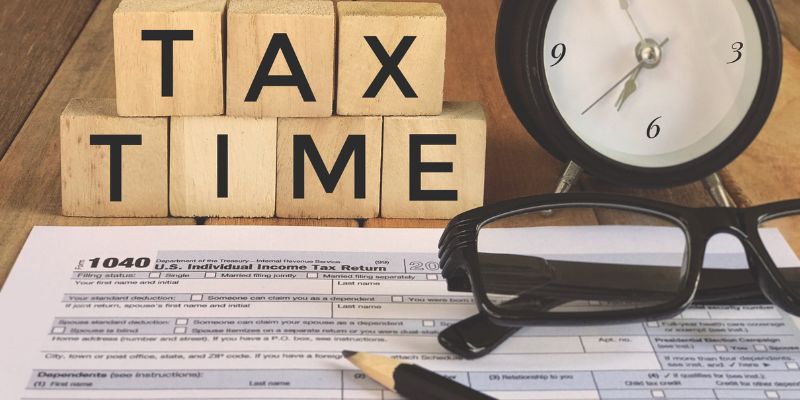Unraveling Credit Card Cash Advance Interest
Nov 15, 2023 By Kelly Walker
Credit card cash advances let cardholders withdraw money from an ATM or financial institution. Unlike credit card purchases, cash advances provide quick cash when card transactions are not possible. These transactions' interest rates, fees, and payback periods vary significantly from credit card purchases.
Instant cash advance interest is the main difference. Cash advances usually accrue interest immediately, unlike credit card transactions, which have a grace period. This early interest accrual makes cash advances expensive. Therefore, cardholders should only use them when required.

Understanding Interest Rates on Cash Advances:
The APR (Annual Percentage Rate) for financial advances is usually stated. This APR is more incredible than ordinary purchase APRs. Cash advance APRs vary by credit card company, affecting borrowing costs.
Due to the additional risk of cash advances, credit card issuers sometimes charge higher APRs. This higher rate reflects the immediate access to cash, the absence of a grace period, and credit card issuer risk.
Cash advance interest rates depend on creditworthiness, card issuer regulations, and market factors. Cardholders must understand these elements since they affect cash advance costs and assist them in making financial judgments.
Cash advance interest rates are more excellent. Thus, careful preparation and financial planning are needed before borrowing. Expenses and possible impacts must be considered for educated and responsible financial management.
Interest Accrual and Calculation:
Cash advance interest begins instantly and builds, raising borrowing costs. The absence of a grace period means interest accrues from day one, regardless of when the credit card payment cycle ends.
Cash advance interest is calculated differently by credit card providers. The average daily balance technique calculates interest based on the average cash advance balance each day of the billing cycle. Cardholders must understand these calculating methodologies to calculate cash advance costs.
Interest starts immediately when a cardholder withdraws $500 cash with a high cash advance APR. If the cardholder doesn't pay off this amount fast, the interest will compound, increasing the debt. Therefore, people must grasp compounding interest and payback schedules.
Many credit card providers offer online calculators to estimate cash advance interest. Making educated cash advance financial choices requires understanding interest accrual and repayment practices.

Impact of Repayment Periods and Minimum Payments:
Cash advance interest rates depend on the payback duration—more extended payback periods are likely to increase interest costs since interest accrues over time. However, more significant or frequent payments over a shorter repayment term may lower interest charges.
Making minimal payments on financial borrowing might lengthen the repayment time and increase interest costs. Minimum payments cover just a tiny percentage of the principal, with the remainder going to interest, prolonging repayment, and increasing interest accrual.
If a cardholder accepts a $1,000 cash advance and pays the minimum monthly payment, a large payment goes towards interest, leaving a large debt. Lengthening the repayment time increases interest costs.
Understanding the effects of payback terms and the significance of paying more than the minimum is crucial to controlling cash advance costs. Individuals may reduce cash loan interest and financial stress by making more outstanding payments or paying off the advance fast.
Fees Associated with Cash Advances:
Credit card cash advances typically include fees, raising borrowing costs. Transaction and ATM fees raise cash advance costs. When cash is acquired, transaction costs of 3% to 5% of the advance amount are levied upfront. Cash advances are more costly upfront due to these non-negotiable costs.
ATM cash advances may include a cost that varies by provider and bank institution. Due to this charge and the transaction fee, credit card advances cost more immediately. Cash advance applicants must understand and account for these costs. Cash advances are expensive to borrow due to these expenses. Understanding these costs helps you choose a funding strategy.
Potential Pitfalls and Considerations:
Cash advances are risky despite ease due to their more significant charges and instant interest. The high cash advance APR and fees raise the cost of borrowing, which might trap people in a debt cycle if not appropriately handled.
Regularly using cash advances may strain finances, particularly if not paid off immediately. Cards may soon become financially burdensome due to hefty interest rates. Thus, alternatives to cash loans and the need for urgent cash must be considered to prevent financial problems.
Personal loans, borrowing from family or friends, and lower-interest credit are alternatives to cash advances. In some instances, these solutions may be better than credit card cash advances due to their better terms and lower prices.
Credit card responsibility is critical to avoiding cash advance hazards. Before using cash advances, people should consider their spending patterns before using cash advances, assess their needs, and consider other possibilities.
Tips for Managing Cash Advances Responsibly:
To lower cash advance interest costs, make more extensive or frequent payments to reduce the debt quicker. People may reduce interest charges by paying off financial advances quickly.
Responsible financial management requires understanding cash advance agreements. Individuals should review their credit card agreement, including cash advances, interest rates, fees, and payback conditions. This information helps cardholders make educated choices and understand cash advance cost ramifications.
Cash advances must be used sparingly for prudent credit card management. Limiting them to emergencies or instances when no other choice is available saves expense and debt.
Cash advances are expensive. Therefore, people should consider alternative credit choices before using them. Personal loans from banks, lines of credit, or family and friends may have better terms and cheaper interest rates than credit card cash advances.
Conclusion:
In conclusion, understanding credit card cash advances' charges, payback conditions, and hazards is essential to responsible use. Understanding the credit card agreement's terms allows people to make educated cash advance selections with financial consequences.
Cash advances should be used wisely. Reserve these transactions for emergencies and avoid using them as a regular source of cash. Limiting their use to requirements reduces costs and the danger of excessive debt.
Responsible credit card cash advance management requires financial knowledge, careful use, alternative discovery, and proactive monitoring. Understanding expenses, utilizing cash advances wisely, evaluating other borrowing options, and closely monitoring financial activity help reduce risks and avoid undue debt. Responsible credit card use is essential for financial stability and avoidance.

Rick Novak Nov 15, 2023

Kelly Walker Nov 15, 2023

Rick Novak Nov 16, 2023

Rick Novak Nov 14, 2023

Kelly Walker Nov 16, 2023

Rick Novak Nov 14, 2023
